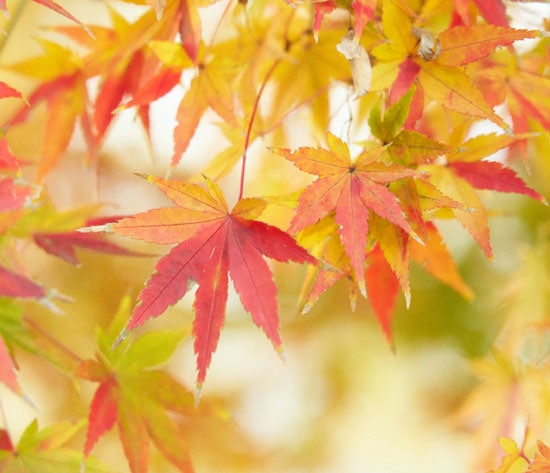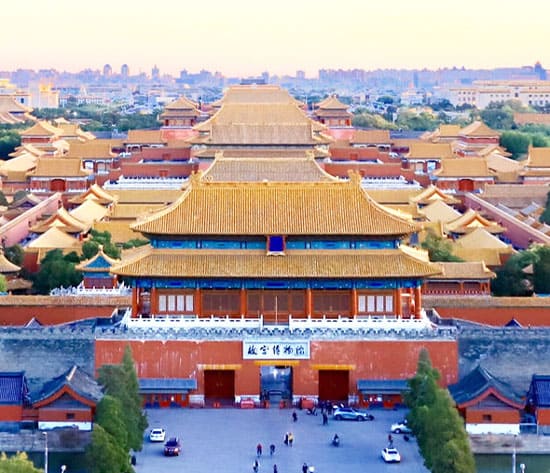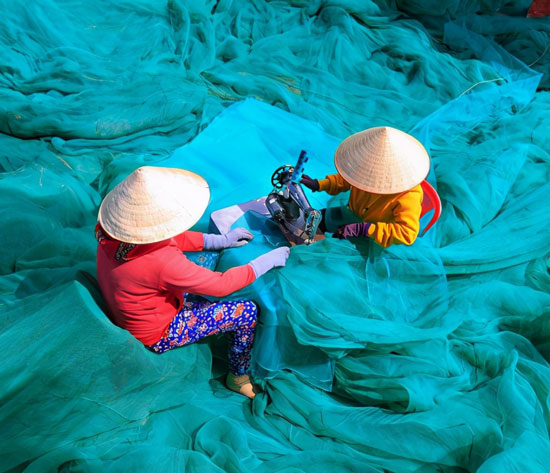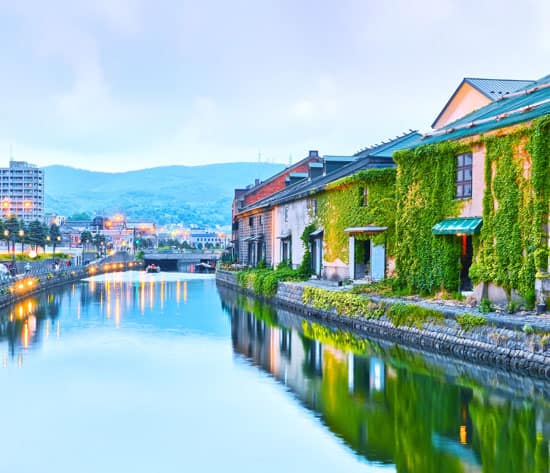Are you confused about when the best time to visit Japan is and what the must-see attractions are in Japan? Planning a satisfying tour of Japan can be both interesting and challenging. When traveling to this popular destination known for its rich culture, history, and natural scenery, you will always find something that attracts you to Japan.
The best destinations and best times to visit Japan almost depend on your interests and preferences. You can enjoy an enchanting view of cherry blossoms in spring, play water sports by the sea in Summer, appreciate golden and flaming red leaves in autumn, and unwind in the hot springs in winter. Now, follow this guide and consider the best places and the best time to visit Japan!
When is the Best Time to Visit Japan?
If divided by four seasons, spring (March to May) and autumn (September to November) are the best times of year to visit Japan, which are the most beautiful seasons in Japan.
The cherry blossoms in spring and the red and golden leaves in autumn will offer you wonderful scenery. And the weather in these two seasons is relatively mild in temperature, with less rainfall. Cherry blossoms bloom from March to May, but they bloom in different regions from southern Japan to northern Japan. So if you want to catch the best time to enjoy the view of cherry blossoms in full bloom, you need to carefully plan the time and place of the cherry blossoms.
Winter is the best time to visit Japan for skiing and hot springs because it is cold and snowy in winter in Japan, which provides good conditions for winter sports. And you may want to relax in a warm environment when winter comes.
June is the cheapest month to travel to Japan. If you travel to Japan in June, you can save money on airline tickets and hotels. But you will also miss some wonderful experiences.
The best months to visit Tokyo and Kyoto are all year round. Such a city view is rarely affected by the weather. You only need to avoid peak travel seasons and extreme weather in Japan.
Japan Travel Guide by Month
Japan has four distinctive seasons. Except for cherry blossoms, you can find different scenery in Japan every month. We list a brief month-by-month guide to help you decide what to do and where to visit in Japan.
Visiting Japan in January
The average temperature in Japan in January is about 2°C (35.6°F) to 10°C (50°F) with sunny and clear days. It is cool and dry in January in Japan.
And Japan snows in January, which is a great time to go skiing and snowboarding. Travel to northern Japan would be a good choice because of the heavy snowfall. You can enjoy your Japan tour in snowy Hokkaido. Furano in Hokkaido and Hakuba in Nagano are both ski and snowboard paradises. Take part in skiing and snowboarding events at the ski resort in Furano, take a cable car to the mountaintop, and enjoy a bird’s-eye view of the stunning snow-covered landscape. Nagano was the host of the 1998 Winter Olympics, where you can also experience skiing, snowboarding, and hiking.
Most ski resorts in Japan are well-developed and have sufficient reception capacity with a complete set of equipment. You can hire ski suits, skis, ski boots, and other equipment here.
Visiting Japan in February
The temperature in January and February is basically very similar. The average temperature in Japan in February is about 6°C (48.2°F). It will be colder in the early morning and the evening. We suggest you prepare some clothes for the cold.
Why not unwind in a hot spring in such a cold season? Enjoying a relaxing soak in a hot spring while appreciating snow scenes would be a unique and relaxed experience. Hakone is a super-famous hot spring area in Japan, which is known for its hot springs resorts and the view of Mount Fuji. You can admire the spectacular landscape of Mount Fuji when enjoying a relaxing soak in an onsen. Or travel to Noboribetsu Jigokudani Valley for boiling sulfuric hot springs.
You can go to the Sapporo Snow Festival, a festival held annually in Sapporo for a week. Huge ice and snow sculptures are lifelike. Winter sports, like skiing and snowboarding, are still suitable and popular in February.
Visiting Japan in March
March is the first month of spring in Japan. The weather gets warm, especially in southern Japan. The average temperature in central Japan is about 5°C (41°F) to 13°C (55.4°F). Southern Japan would be warmer with temperatures reaching 20°C (68°F).
Spring (March to May) is the cherry blossom season in Japan and the best time to visit Japan for the cherry blossoms. If you travel to Japan in late March, you may have a chance to appreciate cherry blossoms in southern Japan, like Fukuoka and Kagoshima. In such mild and pleasant weather, going sightseeing on Japan’s famous bullet train, Shinkansen, would be an enjoyable experience.
You can expect Hinamatsuri (also called Doll's Day or Girls' Day) on 3 March of each year. There are some festival celebrations in shrines and temples that you can experience. Although plum blossoms are not as famous as cherry blossoms in Japan, it is also popular. It is time to enjoy the plum blossoms in shrines and parks (like Hanegi Park and Yushima Shrine in Tokyo), which plant a large number of plum trees.
Visiting Japan in April
The average temperature in Japan is about 11°C (51.8°F) to 19°C (66.2°F), with mild spring temperatures and pleasant weather (except in northern Japan).
It must be the most beautiful season in Japan when cherry blossoms bloom from south to north. Pause to admire blush-colored flowers in Mount Yoshino in Nara, and hike from the foot of the mountain to the top without missing any scenery. Take part in the Meguro River Cherry Blossom Festival and the Ueno Cherry Blossom Festival in the first half of April, join a hanami party, or have a picnic in the parks. Although it is the best season to enjoy blush-colored cherry blossoms in Japan, it could also be a busy time in Japan. It will take you a lot of effort to get away from the crowd. We suggest you find a tour professional travel consultant or tour guide for better advice.
You can experience the Takayama Festival in Takayama, which is one of the three most beautiful matsuri in Japan. The Takayama Festival is held twice a year. You can experience this festival in spring and autumn. The Takayama Festival in spring (Sanno Festival) is celebrated in the southern half of Takayama, while the Takayama Festival in autumn (Hachiman Festival) is celebrated in the northern half of Takayama. You will see gilded floats and puppet shows through the streets.
Visiting Japan in May
The average temperature in Japan is about 15°C (59°F) to 25°C (77°F). It is a warm month, which is not too hot or too cold, with low rainfall.
Generally, May is the end of cherry season; you can only find cherry blossoms in northern Hokkaido, like Sapporo and Hakodate. But you can admire other flowers in Japan, like wisteria in Ashikaga Flower Park in Tochigi. Or travel to Kawachi Fujien in Fukuoka, and walk through the tunnels covered with wisteria flowers.
Golden Week in Japan is a collection of four holidays — Shōwa Day (April 29), Constitution Day (May 3), Greenery Day (May 4), and Children's Day (May 5). The holidays of Golden Week in Japan last from late April to early May, which will bring large numbers of Japanese tourists. Visiting Japan in late May would be better.
Visiting Japan in June
The average temperature in Japan is about 18°C (64.4°F) to 31°C (87.8°F). June is the beginning of the rainy season and summer in Japan. June is the month of water! It becomes hot in temperature and humid. If you want to avoid the rainy season, you can travel to Hokkaido with less rainfall.
Although it doesn’t rain every day, we suggest you arrange some indoor activities which is less affected by the weather. When it is raining, you can enjoy Kabuki (a classical Japanese dance-drama) in Ginza, Tokyo, and taste some takoyaki (Japanese Fried Octopus Balls), sushi, and ramen in a local restaurant. Explore museums, like the Tokyo National Museum and the National Museum of Western Art in Uenokoen, shop in bustling Shinsaibashisuji and Dotonbori.
When it is sunny, you can appreciate beautiful hydrangeas, the highlight of the rainy season in Japan. Why not enjoy the sight of hydrangeas in Shimoda Park (Shiroyama Park) in Shizuoka and Meigetsu-in in Kamakura?
Visiting Japan in July
The average temperature in Japan is about 25°C (77°F) to 31°C (87.8°F). It is hot and humid in most areas of Japan. But the rain will gradually disappear as July passes.
Summer is the season to take a journey to the beaches. As an island country, Japan has a vast coastline and numerous islands. Travel to Okinawa and enjoy some beach time. You can relax on the soft sandy beaches, sunbathe, snorkel, swim in the sea, and observe dizzying tropical fish and colorful coral.
Get close to nature, climb up the Japanese Alps or Mount Fuji, and stay at high altitudes with a relatively cooler temperature. There are many fireworks displays in the summer. You can enjoy some spectacular fireworks displays in large cities, like Tokyo, Shizuoka, and Kanagawa. Experience Gion Matsuri in Kyoto, which will last the whole month of July, and watch the processions of floats.
Visiting Japan in August
The average temperature in Japan is about 27°C (80.6°F) to 36°C (96.8°F). August is the end of summer, but still humid and hot with loads of sunshine.
Spend a vibrant and lively summer by participating in various summer festivals, like the Obon Festival, Aomori Nebuta Matsuri, Awa Odori Festival in Tokushima, and Akita Kanto Festival.
Obon Festival is a traditional Buddhist holiday, which lasts for three days and honors deceased ancestors. It doesn’t have a uniform time, and the official celebration dates are August 13-16. Aomori Nebuta Matsuri is a lantern festival celebration, lasting from August 2nd to August 7th. Awa Odori Festival is a dance festival, in which you can watch dances and traditional musical instruments being played. In the Akita Kanto Festival (August 3 to August 7), people hold up the long bamboo poles with rows of paper lanterns using their hips, shoulders, or foreheads.
Visiting Japan in September
The average temperature in Japan is about 27°C (80.6°F) to 29°C (86°F). Though September is the start of autumn in Japan, it is still a little hot and humid in most regions of Japan. And the typhoons may come.
Because it is cooler in Hokkaido, you can enjoy the early autumn scenery here and hike in Daisetsuzan National Park. The leaves start to turn yellow or red. At this time, beach resorts usually have very few people. It’s a good idea to take an off-season tour to the beaches, which still offer an attractive view. September could be the best month to visit Okinawa with fewer crowds.
Experience the Kishiwada Danjiri Festival (wooden float festival) in Osaka, which is the biggest and most luxurious float festival. It shows well-designed wooden floats. Travel to the magnificent Osaka Castle Park and delve into Japan’s rich heritage.
Visiting Japan in October
The average temperature in Japan is about 14°C (57.2°F) to 23°C (73.4°F). With the deepening of autumn, the temperatures begin to drop and turn cool, offering cooler and more comfortable weather and sunny and dry days. Hokkaido in northern Japan has a lower temperature than other regions in Japan.
October is a pretty good time to admire the beautiful autumn foliage in Japan. Travel to Hokkaido, immerse yourself in vivid autumn scenery, and appreciate crimson and gold maple leaves. Don’t miss the rice harvest in Niigata, which is a producing area of rice and fine rice wine.
There are many different kinds of traditional matsuri in Japan all year, and October is the same. The Takayama Festival (Takayama Matsuri) in autumn is celebrated on October 9-10 after the crops are harvested. You see watch displays of festival floats, Karakuri doll performances, and the Mikoshi Procession.
Visiting Japan in November
The average temperature in Japan is about 10°C (50°F) to 17°C (62.6°F). November is late autumn in Japan, which is a pleasant month to visit Japan because of the cool and dry weather and clear days. We suggest you keep warm if you plan to visit Japan in November.
Have a walk in scenic Arashiyama in Kyoto, and marvel at the red and brilliant autumn leaves. Travel to shrines, temples, and parks in the biggest cities, like Tokyo, Kyoto, and Osaka, and learn about the history and culture of Japan while appreciating the splendid autumn view in the gardens. Eikan-dō Temple and Kiyomizu-dera are both top attractions in Japan.
If you prefer to travel to a warmer place, soaking in a hot spring near Mount Fuji would be suitable for you. Then wander through Lake Kawaguchi Maple Corridor, a canal with lots of maple trees.
Visiting Japan in December
The average temperature in Japan in December is about 5°C (41°F) to 12°C (54°F), which is not as cold as January.
It begins to snow in northern or mountainous areas of Japan. So, you can find that some ski resorts are open in December. At the end of the year, there are various impressive light shows in Tokyo, which make Tokyo colorful. The Nankinmachi Lantern Festival in Kobe lasts from the beginning of December to the end of December.
Although it isn’t a traditional festival in Japan, Christmas is also celebrated by many Japanese. On this day, there is a strong atmosphere of Christmas. You can find Christmas decorations and bright lights everywhere, especially in the bustling metropolitan district of Tokyo. You can consider taking an unforgettable Christmas trip to Japan with your family and friends.
You should know that some attractions will close before the New Year.
When to Avoid Visiting Japan
1. The rainy season in Japan begins in Jun and ends in July. It is humid during these months. But this is not absolute. The rainy season in Okinawa begins in May, while it rains heavily in mid-June in the northeast of Japan. The typhoon season is in September and October.
2. Summer is considered to be the worst time to visit Japan because it is the hottest and wettest time in Japan. The temperature may rise above 30°C (86°F).
3. The peak tourist season (including national holidays) is the most expensive in Japan. We suggest you avoid the following times when you plan your Japan tour:
The New Year (from December 30 to January 4)
Golden Week (between April 29 and May 5)
The Obon Holiday (August 13-16)
Plan Your Japan Tour with Us
Here are some of our most popular private Japan tour itineraries for your inspiration.
8-Day Essence of Japan Tour to Tokyo, Mt. Fuji, Kyoto, Osaka
If you are looking for a different combination of cities in Japan, our Japan travel consultants are always at your service. Feel free to contact us and customize your dream tour to Japan.









Have a Question?
You might see your comment appear on this page, but your email address and full name will not be published. Your personal information will remain confidential. Our Asia travel experts will get back to you as soon as possible. Required fields are marked *